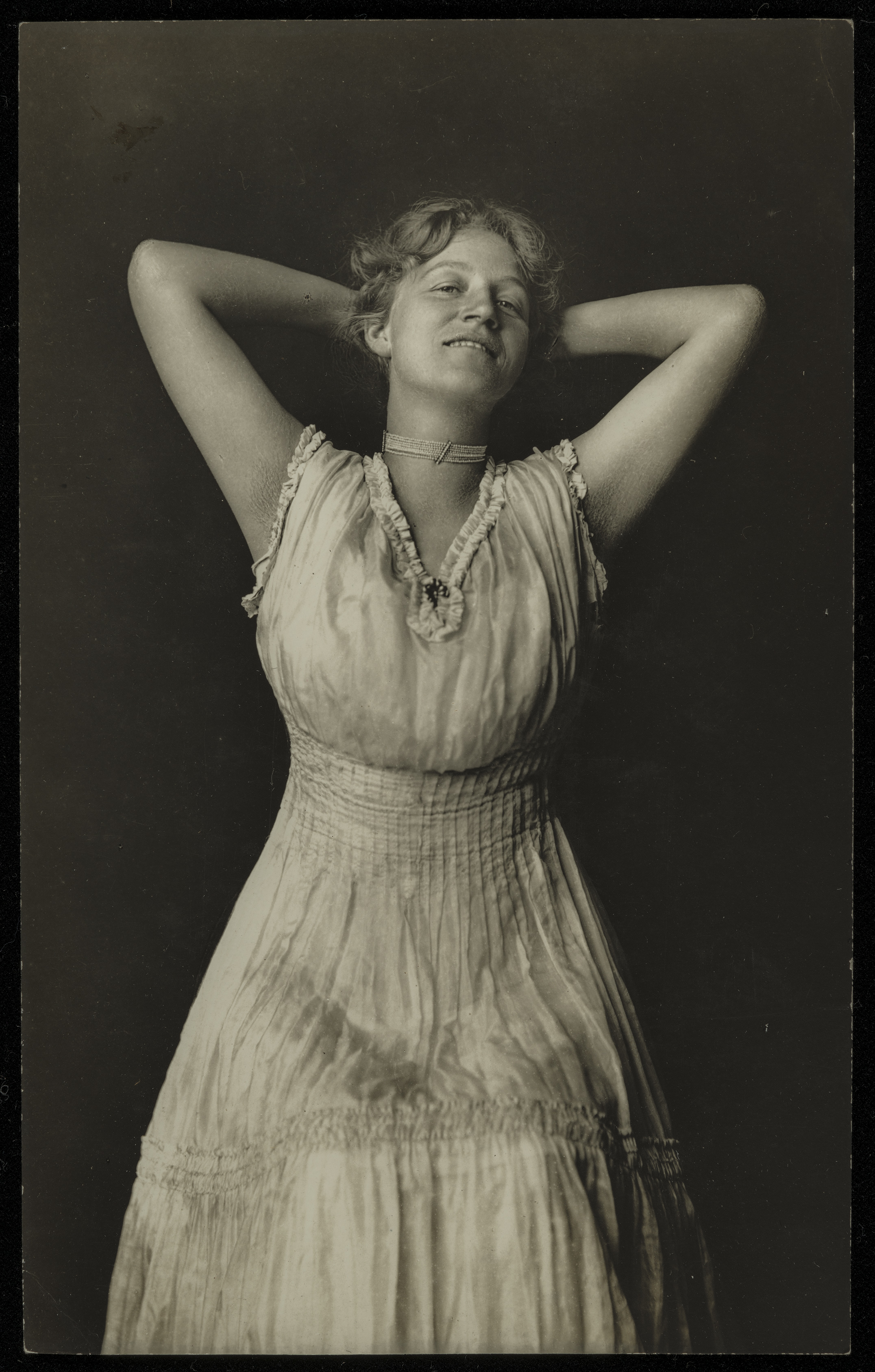Book Review: Edward Weston: The Early Years
Flora Chandler Weston, The Lane Collection, Photograph © Museum of Fine Arts, Boston
By Sarah Sunday
One of America’s greats, and a true original in the world of photography is Edward Weston, a photographer whose widely-recognized work precedes him. His most celebrated images are still lifes set against black backdrops; white shells, mushrooms, cabbage leaves, and contorted bell peppers. His nudes also gained him much recognition - women pictured lean and lithe, legs unshaven. A child of the late 1800s, Weston played a part in revolutionizing early American photography. However, Weston’s earliest works, shot in the first two decades of his life, have almost entirely been destroyed. Dissatisfied with his original photographs, Weston burned the majority of his prints as well as their negatives. It was a mistake he later regretted deeply. However, now, thanks to the Museum of Fine Arts in Boston and their work in recovering images from his lost daybooks, a set of his rare, untouched images have been made available to the public in the book Edward Weston: The Early Years.
Grand mere, The Lane Collection, Photograph © Museum of Fine Arts, Boston
At the age of sixteen, Weston’s father gifted him his first camera: a simple Kodak Bull’s-Eye No. 2. At the time the camera was priced at only $11. Under the advisement of his father, Weston’s first photographic targets were landscapes. He shot simple scenes of fields, deserts, and lakes. As his photography developed, he moved on to human subjects. It would seem that Weston’s first muse was his young wife, Flora Chandler, nude and pregnant in scenes that seemed to draw from the Garden of Eden.
Prologue to a Sad Spring, The Lane Collection, Photograph © Museum of Fine Arts, Boston
However, it was later in life that he was to begin an affair with Margrethe Mather, who became his mentor in photography and his true artistic muse. She was, as he called her, “the first most important person in my life.” A great deal of his earliest works are portraits of Mather, hidden away and taken in the privacy of his studio. In these days, his style of photography was far more pictorial, reminiscent of Alphonse Mucha’s painted Art Nouveau women, nude and supple. The photographs are soft, hazy, and undefined. Weston went on to have yet another mistress and model, Italian actress Tina Modotti, whose images replaced those of Mather’s and who would go on to become a well-known photographer in her own right.
Tina Modotti, The Lane Collection, Photograph © Museum of Fine Arts, Boston
Unlike most other photography books, Edward Weston: The Early Years goes into great descriptions of the photographer’s life, due to the lack of Weston’s early photographs that survived his own destruction. The book is much more than a photographic essay, it is a historical account. Through both the images and the words, the reader comes to a greater level of understanding of who Edward Weston was before he became the Edward Weston the world now knows.
Let's Play Hookie, The Lane Collection, Photograph © Museum of Fine Arts, Boston
The book is a beautiful memory to the late photographer and offers a glimpse into his initial thoughts and styles before he gained the level of notoriety in which he possessed later in his career. His photographs are truly classical and, even in his younger days, he had a wonderful understanding of the beauty in photography and how to capture it. He did so in soft lights and shadows, and in the gracefulness of the female body, his muses and lovers creating a lovely timeline of his early life.
Edward Weston: The Early Years was published by MFA Publications and can be found here.
Margrethe Mather, The Lane Collection, Photograph © Museum of Fine Arts, Boston













